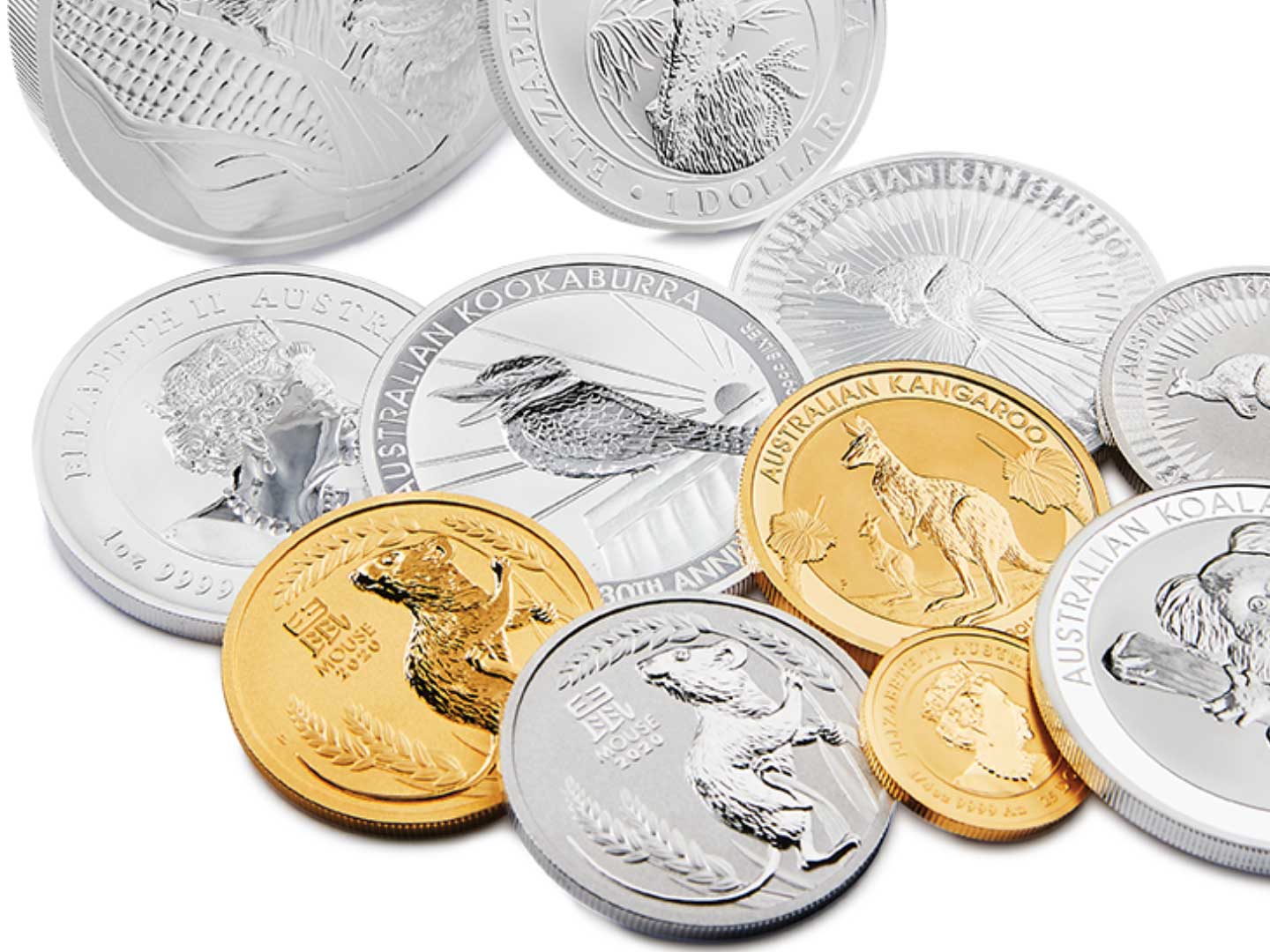The Perth Mint coin collecting glossary

As a coin collecting enthusiast it can be a daunting task getting to grips with the terminology, especially as different mints and suppliers use different terms. To help, we’ve put together this coin collecting glossary to help decipher some of those numismatic terms.
Coin collecting glossary
Antiquing
A surface treatment conveying the abrasions of an ancient artefact.
Bi-metal
A coin consisting of two metals, typically an outer ring around a contrasting centre.
Blank
A carefully prepared flat piece of metal, usually circular, on which designs are stamped. Sometimes ‘planchet’, or ‘flan’.
Bullion coin
A mass-produced precious metal coin priced close to current market rate for gold, silver etc.
Cameo
Synonymous with modern proof coins, representing the contrast between a polished table relative to the frosted devices.
Circulated coin
A coin issued for everyday spending.
Collector coin
A high-quality coin, usually with a collectable, commemorative or otherwise enhanced design, and rarity fixed by low mintage.
Coin
Minted legal tender issued for circulation, investment or collecting.
Denomination
The monetary value stated on a coin.
Devices
Design elements, including the effigy and images, portrayed on the obverse and reverse.
Dies
Hard steel stamp used to strike design onto blanks during the minting process.
Edge
Circumferential, or third side bounding a coin, typically with milled serrations.
Effigy
Portrait of a monarch, president or leader, sometimes ‘bust’ or ‘portrait’.
Error coin
A coin displaying a manufacturing mistake.
Exergue
Space at the bottom of the coin design often containing the year date (eg. sovereigns).
Face value
Spending power stated on a circulating coin. Not necessarily the coin’s market value, particularly in the case of rare and precious metal issues.
Finish
Manufacturing treatment(s) dictating the appearance of the coin surface.
Grade
Scale by which condition of coin is professionally certified in terms of strike, preservation, overall appeal, indicative of market value.
Gilding
Surface treatment in which a thin layer of gold is applied to selected areas of the coin design.
Incuse
Result of dies created with raised design devices that are stamped (incised) into the coin. Sometimes ‘intaglio’.
Issue limit
In modern numismatics, a proportion of the overall mintage presented for sale in specific presentation packaging.
Issuing authority
Government or other body responsible for making and issuing of coins.
Legal tender
Recognised in law as a means to settle a public or private debt or meet a financial obligation within a specific jurisdiction.
Legend
Main or important inscription.
Mintage
Final manufactured number for a specific coin.
Mint mark
Maker’s mark denoting its identity or place of manufacture.
Mule
Example of an error coin on which obverse and reverse designs are mismatched.
Numismatics
As practiced by numismatists, the study and collection of coins, tokens, banknotes, and medals.
Obverse
The heads side of a coin, denoting the side usually portraying an effigy of the monarch, president, or leader.
Pattern
A trial piece, generally of a new design, metal, size, or shape.
Piedfort
Extra thick, extra heavy coin, derived from French term relating to medieval trial or presentation coins.
Privy mark
In modern minting, a small device added to the main design as an enhancement. Inspired by earlier minting practices where it was used to help identify the moneyer, or as a counterfeit measure.
Proof coin
Ultimate example of the minter’s art – a process resulting in finely frosted design devices on a flawless mirror-like background.
Relief
Result of dies created with recessed design devices that are raised on the coin. An effect accentuated further on collectable ‘high relief’ and ‘ultra high relief’ issues.
Reverse proof
The same technique for proof manufacture with the resulting coin displaying mirror-like design devices on a frosted background.
Rim
Raised border on both obverse and reverse sides that help to protect coin design from wear and tear.
Reverse
The tails side of a coin.
Strike
The process of stamping the blank between two dies to impart design.
Table
The background, sometimes ‘field’, area of a coin’s surface free of design or inscription.
Type set
Complete collection of coins based on design or type.
Uncirculated
Coin that is held back from circulation as a record or presentation piece, or a coin made for investment or collectable purposes.
Year date
Date imprinted on the coin signifying its year of issue.
Year set
A set of circulating coins featuring all denominations on issue.















